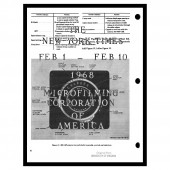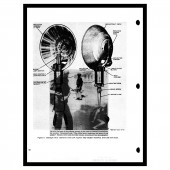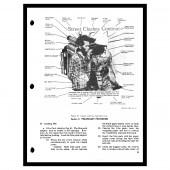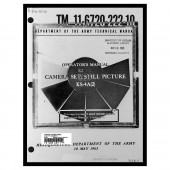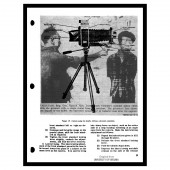Kelly O'Neill
Location:
Salt Lake City, United States
School:
University of Utah
Photographs are unique among human signs for their ambiguous adoption into a multitude of contradictory systems of understanding. On the one hand they represent the truth of objective scientific vision which precisely captures reality, while on the other they appear as subjective creations of an individual who manipulates the photograph through cropping, lighting, point of view, etc. to portray a particular point or feeling. This unresolvable contradiction of the photograph as simultaneously aesthetic and empirical is what spurs my artistic endeavors. Reveling in the indecipherable beauty of photographic meaning my works, such as “Preliminary Procedures,” investigate the liminal spaces of photography were aesthetics, beauty, objectivity, and fact comingle to reveal the inseparable nature of these divergent elements within the photographic object. No matter how poignant a photo might be it is none the less an empirical record of physical and chemical facts, while conversely no matter how anesthetic a photograph tries to become it will always retain a hint of aesthetic composition. For while the ambiguous nature of photography’s dual existence might represent an insurmountable paradox, it also reveals the unexplainable power of this illusively captivating medium.
More specifically my current body of work, “Preliminary Procedures,” interrogates the ways in which photographic imagery transmutes factual statements into cultural icons. Acknowledging the initial systems of knowledge creation that allowed these images to function as fact, this series investigates how time deteriorates these institutions permitting new cultural meanings to adhere to specific photographic surfaces. The images were created by combining multiple reference sources within Photoshop and then hand printing these collages onto selenium toned silver gelatin paper using the digital negative process. The source material, procured through archival research at the University of Utah, comes from a PDF scan of government documents describing proper camera operation from 1963, as well as scans from a library microfilm of the February 2, 1968 New York Times. By amalgamating these various photographic forms (microfilm, PDF, news print, government document, and digital scans), many having already traversed several stages of mediation, into one archival silver print, the work reproduces the multiplicity of photographic production and its dependency on interpretation to effectively convey ideas of both empirical and aesthetic dimensions. More than a meditation on the changeability of photography, these images reveal the paradoxical ability of photographs to depict journalistic, narrative, factual, and iconic truths in one simultaneous gesture. This elusive quality of photographic meaning – momentarily solidified in my prints for examination – is never fully grasped, remaining a tantalizing apparition; mesmerizing the unsuspecting audience.
More specifically my current body of work, “Preliminary Procedures,” interrogates the ways in which photographic imagery transmutes factual statements into cultural icons. Acknowledging the initial systems of knowledge creation that allowed these images to function as fact, this series investigates how time deteriorates these institutions permitting new cultural meanings to adhere to specific photographic surfaces. The images were created by combining multiple reference sources within Photoshop and then hand printing these collages onto selenium toned silver gelatin paper using the digital negative process. The source material, procured through archival research at the University of Utah, comes from a PDF scan of government documents describing proper camera operation from 1963, as well as scans from a library microfilm of the February 2, 1968 New York Times. By amalgamating these various photographic forms (microfilm, PDF, news print, government document, and digital scans), many having already traversed several stages of mediation, into one archival silver print, the work reproduces the multiplicity of photographic production and its dependency on interpretation to effectively convey ideas of both empirical and aesthetic dimensions. More than a meditation on the changeability of photography, these images reveal the paradoxical ability of photographs to depict journalistic, narrative, factual, and iconic truths in one simultaneous gesture. This elusive quality of photographic meaning – momentarily solidified in my prints for examination – is never fully grasped, remaining a tantalizing apparition; mesmerizing the unsuspecting audience.
